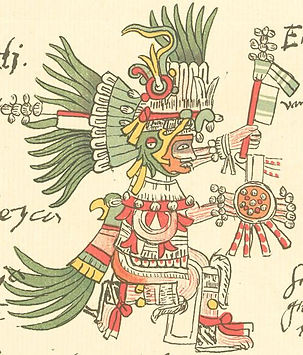
Western Bluebird
The Rufous Hummingbird: Climate Regeneration
When you look at this Rufous Hummingbird, you see regeneration...
When you look at this rufous hummingbird, you see regeneration. This unassuming creature is no longer than a credit card. What it lacks in stature, it makes up for in beauty and agility. The rufous hummingbird can be found in California, the Pacific Northwest, and even Alaska from spring to fall. Then in the winter, this hummingbird takes an annual journey to Mexico. On the migration, the birds travel thousands of miles and hit elevations as high as twelve thousand feet. The travels of the rufous hummingbird is a great example of a characteristic true about all birds of the species. Hummingbirds only exist in the Americas and are a uniquely American symbol in Folklore. These birds have inspired Native stories for generations throughout North and Central America. Each narrative about the hummingbird differs from culture, yet the common theme among each is the creature's embodiment of regeneration.

Male rufous hummingbird

Aboriginal Kachina Doll
In North America, the Hopi Tribe of Arizona have a repopulation story that involves the hummingbird. In this narrative, two children are deserted and left to take care of themselves. When they are on the cusp of death, the hummingbird appears to them and provides them with life saving corn. Additionally, the bird helps the boy and girl reunite with their parents. This story inspired the creation of a traditional Pueblo Kachina in honor of the hummingbird. A kachina is a ancesial spirit that communicates with both men and gods. The physical manifestation of this ethos is a wooden doll adorned in bright colors. In the case of the hummingbird, its spirit is considered to intervene with the gods on behalf of the Hopi people, similar to how the bird intervened with the children in their time of need. The idea of salvation coming from the hummingbird characterizes the creature to be compassionate, creating a model that humans should follow. The stories centralizing the hummingbird's character encouraged native people to practice favorable attitudes.
The migration patterns of the rufous hummingbird are made apparent through the cultural impact that they made in Central and South America. The Mayans considered the hummingbird to be the messenger between the gods and men. They also believed that the bird was able to send thoughts of humans to one another. This means that when a hummingbird was observed, Mayans thought that someone was sending good wishes. The Aztecs also highly regarded the hummingbird, so much so that their god of sun and war was inspired by the specimen. Huitzilopochtli came from the feathers of a hummingbird and is featured wearing the quills as armor in Aztec artwork.

Huitzilopochtli: Aztec God of Sun and War
The narratives involving the hummingbird informed the behavior of native people. The species' link to the concept of resurrection and rejuvenation inspired them. These ideas motivated them to delight in beauty and hope for the future However, these influential stories are at risk, as the hummingbird approaches extinction created by anthropogenic causes. The source of their endangerment includes global temperature rise, creating more catastrophic weather events that disturb the specie’s habitats and migration patterns. Hummingbirds are also dying off as usual food sources decrease, a ripple effect in the grand food chain. If the hummingbird becomes extinct, it is inevitable that cultural stories will dwindle. In order to preserve these important narratives, communities must come together to protect the hummingbird. The only way that this is possible is to fight against climate change. Just as the hummingbird is an image of regeneration throughout American folklore, society must fight for regeneration in the climate, letting the rufous hummingbird be a symbol of hope.
